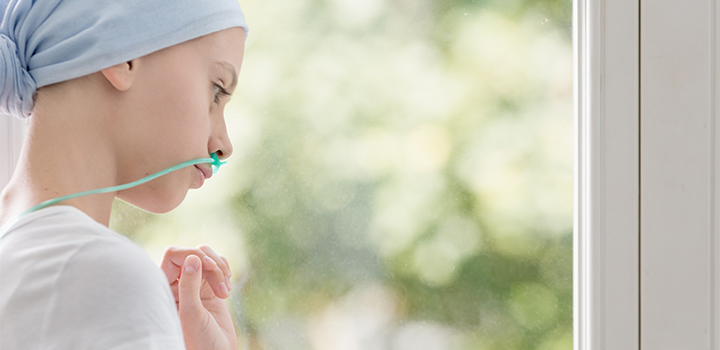Which cancers affect children?

According to CHOC (Childhood Cancer Foundation South Africa) cancers in children tend to be different from those found in adults and usually occur in developing cells. We take a look at current national and international, common childhood statistics.
Listen to our paediatric oncologists share fascinating insights into childhood cancers, and hear from a mom to two young daughters diagnosed with cancer, here.
The American cancer society reports that Leukaemia constitutes about one third of all childhood cancers. The other most common malignancies that occur in children are lymphomas and tumours of the central nervous system. The September 2018 World Health Organisation Fact Sheet on Cancer in Children, reports that Cancer is a leading cause of death for children and adolescents around the world and approximately 300,000 children aged 0 to 19 years old are diagnosed with cancer each year
There are also several tumour types that occur almost exclusively in children:
- Neuroblastoma (cancer of the central nervous system)
- Nephroblastoma (cancer of the kidneys)
- Medulloblastoma (brain cancer)
- Retinoblastoma (cancer of the eye).
The WHO Fact Sheet adds that, in high-income countries, approximately 80% of children with cancer survive after being diagnosed with cancer. The prognosis is much lower for children in low- and middle-income countries, possibly due to:
- Late diagnosis of cancer leading to lower levels of effective treatment
- Poorly equipped hospitals without the appropriate medicine and equipment to treat the children
- Other diseases that the children may have
- Lack of knowledge about cancer among primary healthcare providers treating the children
- Treatment that’s unaffordable for many parents in low-resource settings who are required to pay for the costs themselves.
Cancer in children most often occurs in developing cells like such as bone marrow, blood, kidneys and nervous system tissues. Life-threatening blood disorders include aplastic anaemia, thalassaemia and idiopathic thrombocytopenic purpura.
You can read more about the CHOC Parent-to-Parent program here. It takes volunteer parents - whose child has completed treatment or is on maintenance (medication and general care) - and puts them in touch with parents about to begin their child’s cancer journey.
Top five cancers in children
As seen in the most recent South African Children’s Cancer Study Group (SACCSG) registry, statistics for 2009 to 2013 show that the five most common childhood cancers in South Africa are:
- Leukaemia
- Lymphoma (tumours that begin in the lymph glands)
- Brain tumours
- Cancer of the kidneys
- Cancer of connective tissue
CHOC reports that leukaemia comprises 25.4% of all childhood cancers which is similar to the rates in other countries. In developed countries, brain tumours make up another 25% while in South Africa statistics show that they only make up 13.4%. This discrepancy is thought to be due to under-diagnosis, especially in rural and smaller hospitals.
According to South Africa’s National Cancer Registry’s (NCR) 2012 statistics, these cancers are most prevalent amongst South African children:
Top five cancers in South African boys under the age of 19
- Leukaemia
- Cancer of the kidney
- Cancer of the brain and central nervous system
- Hodgkin’s lymphoma
- Cancer of the eye
Top five cancers in South African girls under the age of 19
- Leukaemia
- Cancer of the kidney
- Cancer of connective tissue
- Cancer of the brain and central nervous system
- Hodgkin’s lymphoma
Read more about supporting a child through a cancer diagnosis here.
Read more about supporting a teen through cancer here.
Find out more about helping a child to feel safe in hospital here.
Severe illness can be life-changing. Discovery is here for you
At Discovery, we understand that an illness like cancer affects many aspects of your life. If you're a Discovery Health Medical Scheme member who is diagnosed with cancer, you are covered by a comprehensive Oncology Programme. You'll also have access to a palliative care programme, which offers unlimited cover for approved care at home.
To protect you financially, Discovery Life offers the best dread disease product in the market for cancer cover, as awarded by the Independent Clinical Oncology Network. Our award-winning LifeTime Max 200% Severe Illness Benefit offers coverage across the full spectrum of severities and coverage for remission of a cancer. Contact us to learn more.
Related articles
How is cancer classified? Oncology terminology explained
It's normal to feel overwhelmed by a cancer diagnosis, and trying to make sense of the bewildering terminology that accompanies it often confuses even more. We explain the most common terms to help you to understand what you're dealing with.
Cancer prevention – seven risk factors you should pay attention to
Cancer prevention refers to any action taken to lower your chances of getting cancer. Remember – it’s your body and your life that you’re taking steps to keep as healthy as possible. Here’s what you need to know to do just this.
When cancer is not your only health concern
For most people over the age of 65, hearing that you have a serious illness is unfortunately nothing new. Your overall health plays a vital role in cancer, so make sure your health is fully assessed before you start